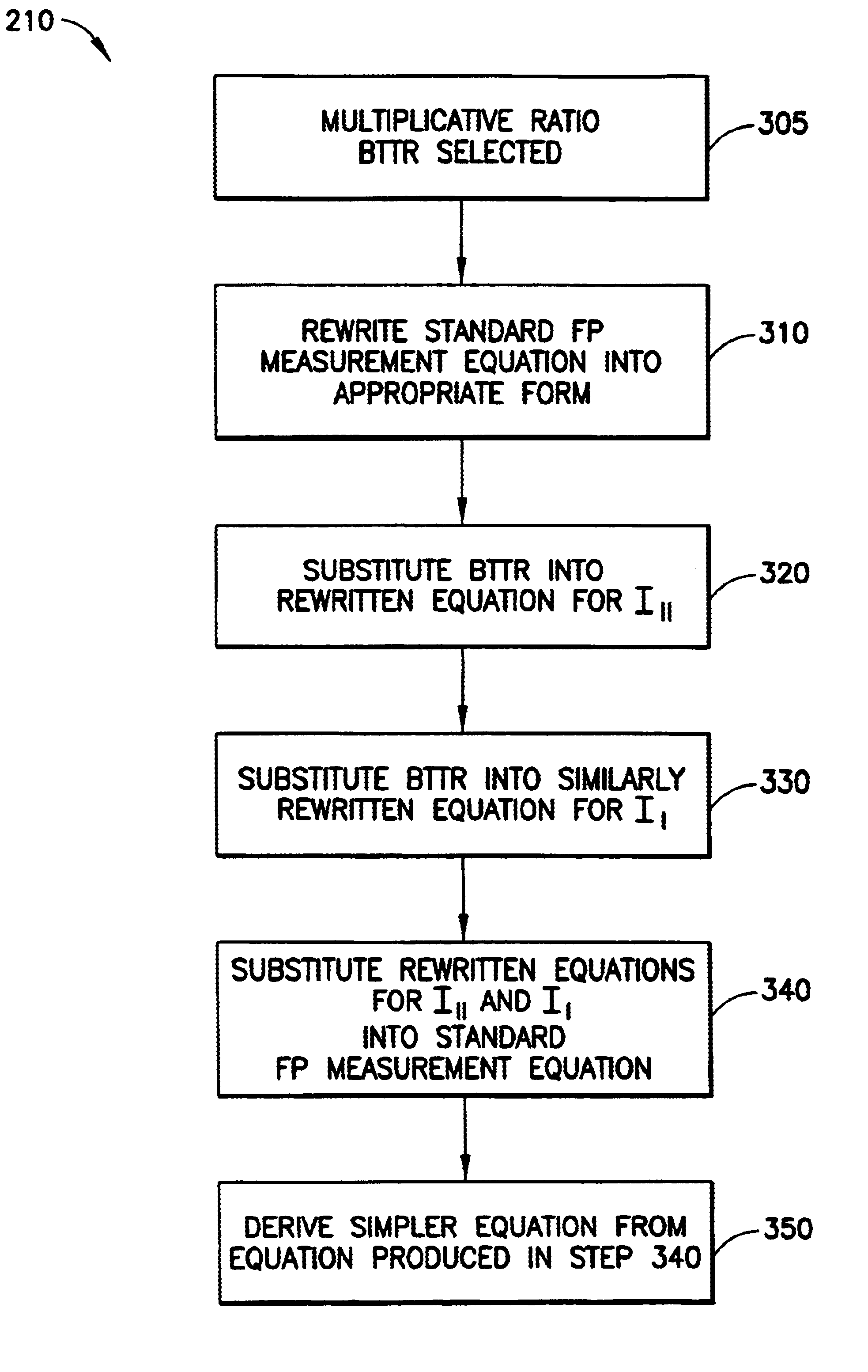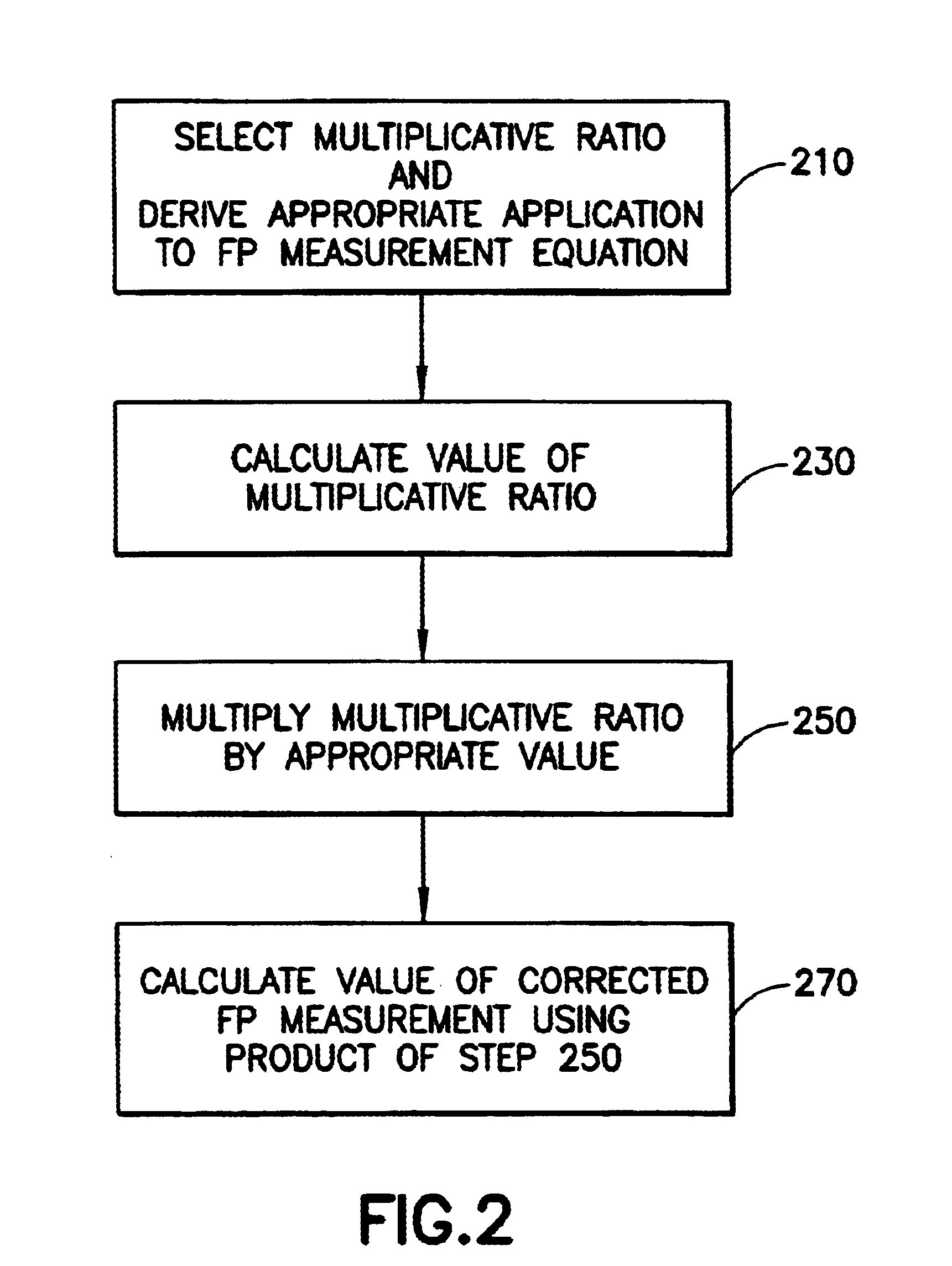Ratiometric background correction for fluorescence polarization assays
a fluorescence polarization and background correction technology, applied in the field of fluorescence polarization measurement correction, can solve the problems of well-to-well variation, affecting the accuracy of fp measurement, and the degree of photobleaching
- Summary
- Abstract
- Description
- Claims
- Application Information
AI Technical Summary
Benefits of technology
Problems solved by technology
Method used
Image
Examples
first embodiment
Experimental Verification of the First Embodiment
The equation derived in the first embodiment (Equation 10) was tested by making corrected FP measurements using the method shown in the flowchart of FIG. 5. For the FP measurements, several assays with known molecular interactions were used, but at label (fluorophore) concentrations well below what is used with conventional instruments. The assay material was from a pharmacogenomics single nucleotide polymorphism (SNP) experiment designed to give a high FP value when the target SNP allele is present to match the template, in this case a T allele.
On a Symmetry FP Plate Reader prototype (this type of FP Plate Reader is now called Affinity) from Cambridge Research & Instrumentation (Cambridge, Mass.), a row of control wells were measured simultaneously by the Symmetry (Affinity) CCD camera. The left half of the row was filled with all assay materials except the fluorescence label, and the right half was filled with the typical assay mix,...
second embodiment
The method according to the present invention may be applied to the above equation, resulting in: ##EQU19##
Thus, the method according to the present invention may be applied to FA measurement equations to compensate for background fluorescence while maintaining both precision and accuracy.
PUM
| Property | Measurement | Unit |
|---|---|---|
| fluorescence | aaaaa | aaaaa |
| fluorescence polarization | aaaaa | aaaaa |
| fluorescence anistrophy | aaaaa | aaaaa |
Abstract
Description
Claims
Application Information
 Login to View More
Login to View More - R&D
- Intellectual Property
- Life Sciences
- Materials
- Tech Scout
- Unparalleled Data Quality
- Higher Quality Content
- 60% Fewer Hallucinations
Browse by: Latest US Patents, China's latest patents, Technical Efficacy Thesaurus, Application Domain, Technology Topic, Popular Technical Reports.
© 2025 PatSnap. All rights reserved.Legal|Privacy policy|Modern Slavery Act Transparency Statement|Sitemap|About US| Contact US: help@patsnap.com



